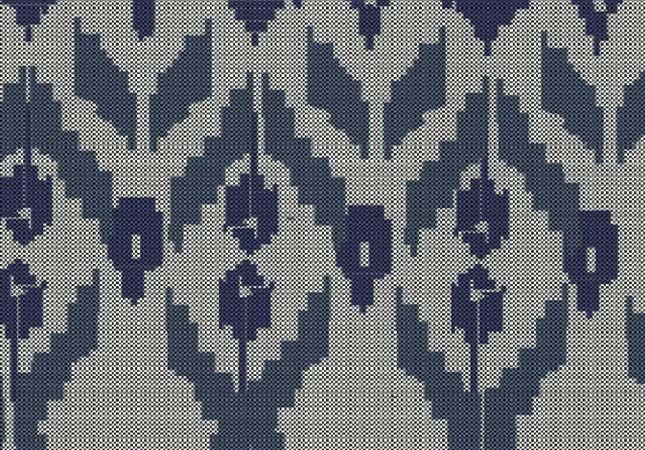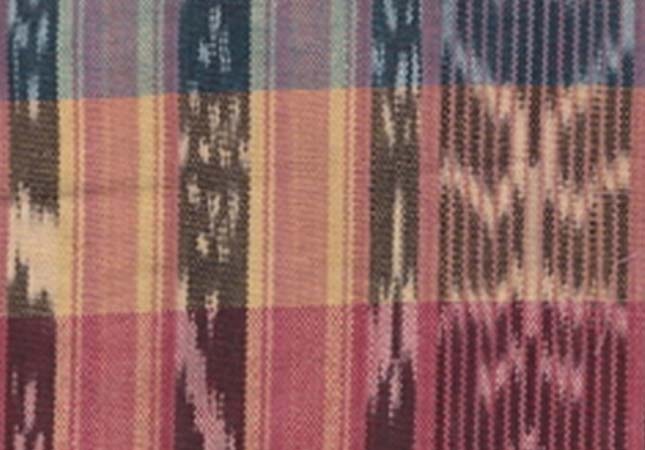What Is Beam Printing?
Beam printing fabric is called by this name so popularly because of its production process. The process is about to print pattern directly on the warp when it on the weaving beam or warp beam, then knitting and washing it, which not only saves the dyeing and printing process of the fabric in the tradition way, also makes the fabric with 3D pattern and more stereoscopic. Traditional fabric usually been dyed or printed pattern on it after the weaving and knitting process of warp is done, and generally the final product is lack of layering feeling and is in a single-colored pattern without a natural transition, which is hard to reflect the real flower pattern. Compared with traditional printed fabrics, the weaving beam printing process makes the fabric meet all the strict requirements of fabrics asked by customers.
Process Of Beam Printing
This is a process that dyeing batch warp in the weaving beam form. The yarn is wound around a hollow mandrel with dense perforations and dyed in an open or sealed container and the circulating pump forces the dye liquor to circulate from the inside to the outside and from the outside to the inside through the yarn layer for achieving uniform dyeing. Originally, in a warp dyeing process, it is very suitable for dyeing knitted fabrics or loose woven fabrics because of the no dynamic tension or friction and the static dyed process.
The Beam Dyer Machine
dyeing process of synthetic knitted warps with weaving beams. It consists of dyeing can, circulating pump, heating system and piping system. The body of it is mainly made of a horizontal stainless steel pressure-resistant cylindrical dyeing can. The working principle is about to roll the materials on the hollow stainless reel that full of small holes, waiting the warp roll which needed to by dyed be pushed into dyeing can. During the dyeing process, after the dye liquor is transported by the circulating pump and heated by the heating pipes, it enters the can from the hollow roll to the fabric layer to circulate from the inside to the outside, from the outside to the inside. The ratio is about 1:20 with the maximum working temperature up to 130 °C and the maximum thickness of the warp layer up to 150mm. It can be used for high temperature & pressure dyeing with disperse dyes for polyester warp knitted shirting fabrics, mosquito nets, polyester yarns, low elastic yarn interwoven outer fabrics, etc, and can also be used for nylon yarn warp knitted fabrics with neutral dyes at 98℃.
Beam Printed Fabrics
The change of the warp tension affect the change of the pattern position directly because it need corresponding sizing, harnessing and knitting & weaving before the warp yarn is drawn in the loom if want to print the pattern only on the warp. So that the pattern of beam printed fabric cannot be as regular as others. However, misalignment of the printed warp positions makes the pattern in a more special visual effect.
1. Whole Bottom Warp Printed Fabric
It means all the warps of one fabric are used beam printing processing method, which makes much more cost than normal fabrics when producing it.

2. Partial Beam Printed Fabric
After printing on part of the warp yarns, they are arranged in the yarn-dyed fabric at the same time as the dyed yarns, so that the pattern of the yarn-dyed printing has more color changes.

These two different fabrics finally combine the beam dyed fabrics with the printed fabric , which opens a new concept of yarn-dyed fabrics. The beam printed fabric produced by the heat transferring and warp printing method, these producing methods make the color of fabrics changes if in different observation angle, which is similar as the "Ink accumulation" effect traditional painting method in ancient China. There are distinct layers but a hazy feeling, bright colors but a 3D visual effect, which achieves the overall unity of the primary and secondary colors on the fabric. It is a great work and improvement to all fabric industry.




